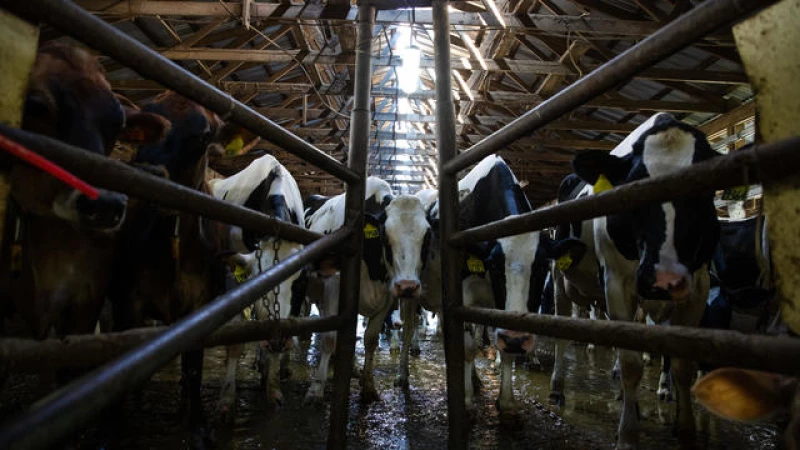Breaking News: The bird flu outbreak has now reached dairy cattle in the United States. Authorities have discovered affected cows in multiple states, underscoring the crucial importance of only consuming pasteurized dairy products.
A joint statement from the U.S. Department of Agriculture, Food and Drug Administration, and Centers for Disease Control and Prevention has confirmed the spread of the bird flu to dairy cattle. Sick cows from farms in Kansas and Texas were tested, with results showing the presence of highly pathogenic avian influenza (HPAI). This strain of the virus has been causing significant harm to bird populations in Europe and Asia since August 2020, leading to severe illness and death among similar species in the U.S., as reported by the Fish and Wildlife Service.
This development marks a milestone as it is the first instance of the bird flu affecting dairy cattle, according to the American Veterinary Medical Association. The discovery comes shortly after the virus was detected in goats on a farm in Minnesota. Earlier this year, the bird flu also made its way to polar bears, resulting in the death of one bear, and has now impacted marine animals, causing the deaths of thousands of seals and sea lions.
Bird Flu Impacting U.S. Cattle and Milk Supply
Reports have surfaced indicating that bird flu is suspected of affecting U.S. cattle, particularly dairy cows, as they exhibit symptoms such as decreased lactation and low appetite. According to a joint news release, milk samples from two farms in Kansas and one in Texas have shown signs of impact. Additionally, a swab from a dairy farm in Texas has also tested positive for the virus.
How Will the Bird Flu Affect U.S. Milk Supply?
Despite the decrease in milk production among affected cattle, officials have stated that the current loss is not significant enough to cause a major disruption in the milk supply. They reassured the public by mentioning that there should be no notable impact on the price or availability of milk and dairy products. Moreover, with the U.S. typically experiencing higher milk production during the spring months, the overall milk supply is expected to remain stable.
There is also no concern from the agencies that milk in the commercial supply is unsafe. All milk products must be pasteurized and only milk from healthy animals is allowed to be sent to processing for human consumption, they added.
"Milk from impacted animals is being diverted or destroyed so that it does not enter the human food supply," agencies said. "In addition, pasteurization has continually proven to inactivate bacteria and viruses, like influenza, in milk. FDA's longstanding position is that unpasteurized, raw milk can harbor dangerous microorganisms that can pose serious health risks to consumers, and FDA is reminding consumers of the risks associated with raw milk consumption in light of the HPAI detections."
The spread of bird flu to cattle comes just weeks after Texas cattle ranchers in the panhandle were devasted by the state's largest-ever wildfire. In the wake of the fires, thousands of dead cows had to be picked up across the scorched region.
"Our producers in the Texas Panhandle have already endured enough," Texas Agriculture Commissioner Sid Miller said, calling the situation "unprecedented." "The Texas Department of Agriculture will use every resource available to maintain the high standards of quality and safety that define Texas agriculture."
Can bird flu spread to humans?
While there have been cases of bird flu spreading to humans, health officials have said that these instances remain rare.
According to the USDA, FDA, and CDC, initial testing conducted by the National Veterinary Services Laboratories has not shown any changes to the virus that would increase its transmissibility to humans. This suggests that the current risk to the public is still low. Federal and state agencies are working swiftly to carry out additional testing for HPAI and perform viral genome sequencing. This will help in gaining a better understanding of the situation, including the characterization of the HPAI strain or strains linked to these findings.







